Leading lines are vertical, horizontal, or diagonal lines that attract a viewer’s attention and lead the eye to critical areas in your image. Leading lines are an effective tool for landscape photographers looking to create depth in their photos, and to draw the viewer deeper into the scene.
For the image below, I used a leading line—the reflection of the sky above a flooded slot canyon—to encourage the viewer to explore the entire composition from bottom to top.
What are lines?
Quite simply, lines are visual elements of a scene that are more or less straight and that have significant length but relatively little width. An example might be tree trunks in a forest, such as with the image below. Technically, lines alone are nothing. As the famous painter Henri Matisse once said, “A line cannot exist alone; it always brings a companion along. Do remember that one line does nothing; it is only in relation to another that it creates a volume.”
For example, each tree trunk in the photo below isn’t really a line, but rather two lines that form the shape of the trunk and give it volume. For simplicity’s sake, however, I will refer to many objects that are really a collection of lines as simply a single line.
Use lines to lead the eye
An effective way to create depth is to use lines that lead the viewer’s eye into the composition. Leading lines encourage the eye to travel deeper into the scene. Particularly when the lines emanate from the bottom of the image frame and point to important elements in the background, they can be very effective at grabbing the viewer’s attention and propelling their eye into the scene. For example, the image below uses leading lines coming in from the bottom of the image frame, directing the eye into the heart of the image.
Diagonal and vertical lines often make for a more dynamic composition than horizontal ones, giving a sense of upward or downward motion as they lead the viewer’s eye. Horizontal lines, such as a distinct horizon line, can sometimes be problematic as they tend to visually divide a scene, and if placed improperly can interrupt visual flow and trap the eye. Lines often work best when starting at the bottom of the image frame, but you can also make effective compositions having the lines come from somewhere else. In the image below, lines formed by rippled sand effectively lead the viewer’s eye from the foreground in the bottom of the composition, to the background near the top.
Related eBook: Visual Flow: Mastering the Art of Composition
Use converging lines for compositional power
For greatest effect, multiple diagonal lines can help create a sense of depth in a photo by converging at a single point of interest. This is known as a vanishing point, which is the point in the distance at which objects become too small to see. This concept is easily illustrated by railroad tracks: even though they are parallel, when you look down a set of tracks, they seem to steadily converge to a point at the horizon. This point is the vanishing point. When used in landscape composition, a vanishing point creates an important perspective cue and can be very effectively used to create depth in a photograph. For example, with the image below, the ripples in the sand appear to converge in the distance, even though they are parallel and don’t actually converge.
This realization—that objects receding in size with distance (especially parallel lines) appear to converge on a single point—revolutionized perspective in art during the Renaissance. Painters took full advantage of the use of vanishing point, using it to create depth in their compositions and to create a realism of perspective that had not been seen before in art. It didn’t take painters long, however, to figure out that the use of vanishing point didn’t just create depth—it also riveted the eye, compelling it to travel headlong deep into the image. The human eye is naturally inclined to follow a line to its conclusion; this is what makes vanishing point so powerful, as a vanishing point is where two or more lines in an image terminate. For the image below, I used a long exposure to capture streaking diagonal lines resulting from foam flowing toward me in the moving water. The effect creates a vanishing point powerfully leading the viewer from foreground to background.
Related article: Tips for Using Foreground to Create Depth
The visual vortex
You can create powerful compositions with radiating diagonal lines emerging from the corners and edges of the image frame, inevitably drawing the eye to a central vanishing point: I call this a “visual vortex” composition, which produces a dizzying and compelling perspective, creating a commanding visual effect. If all the lines in the image terminate in the same place, the viewer’s eye is inevitably drawn to that point. When using this technique, look for leading lines radiating from the corners and edges of the image frame, such as the striations in the rock in the slot canyon image below. The sandstone striations were perfect for a visual vortex composition, with diagonal lines coming from all of the image edges and converging in the middle. The eye is drawn to the vanishing point, strongly focusing visual attention there.
Conclusion
Leading lines are a powerful tool for landscape photographers. Used properly, they can effectively draw the viewer deeper into the composition.
About the author: World-renowned professional photographer and Tamron Image Master Ian Plant is a frequent contributor to a number of leading photo magazines (including Outdoor Photographer, Popular Photography, Landscape Photography, and others). You can see more of his work at www.ianplant.com.
Have something to add to the story? Leave a comment or email editor@outdoorphotographyguide.com.


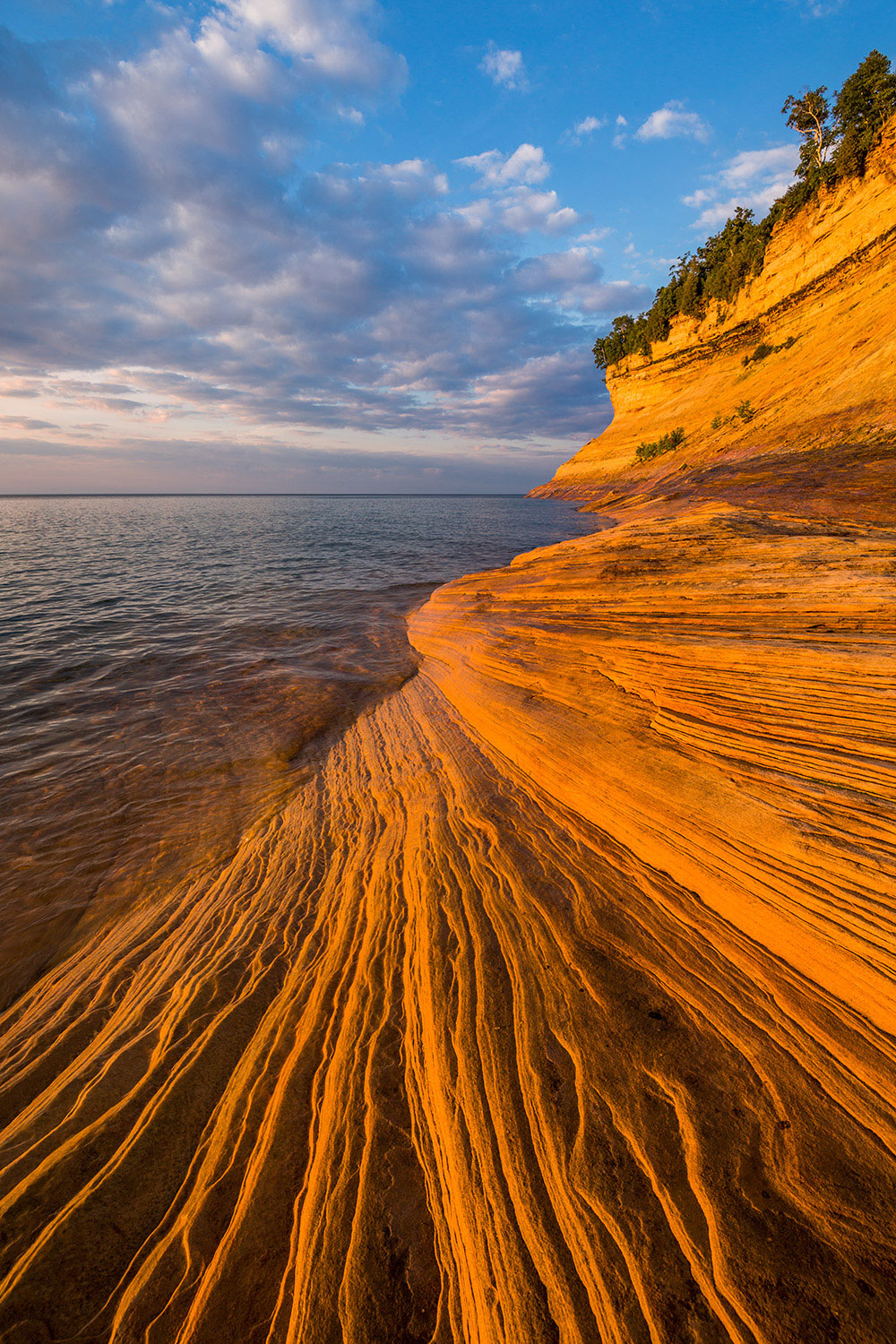
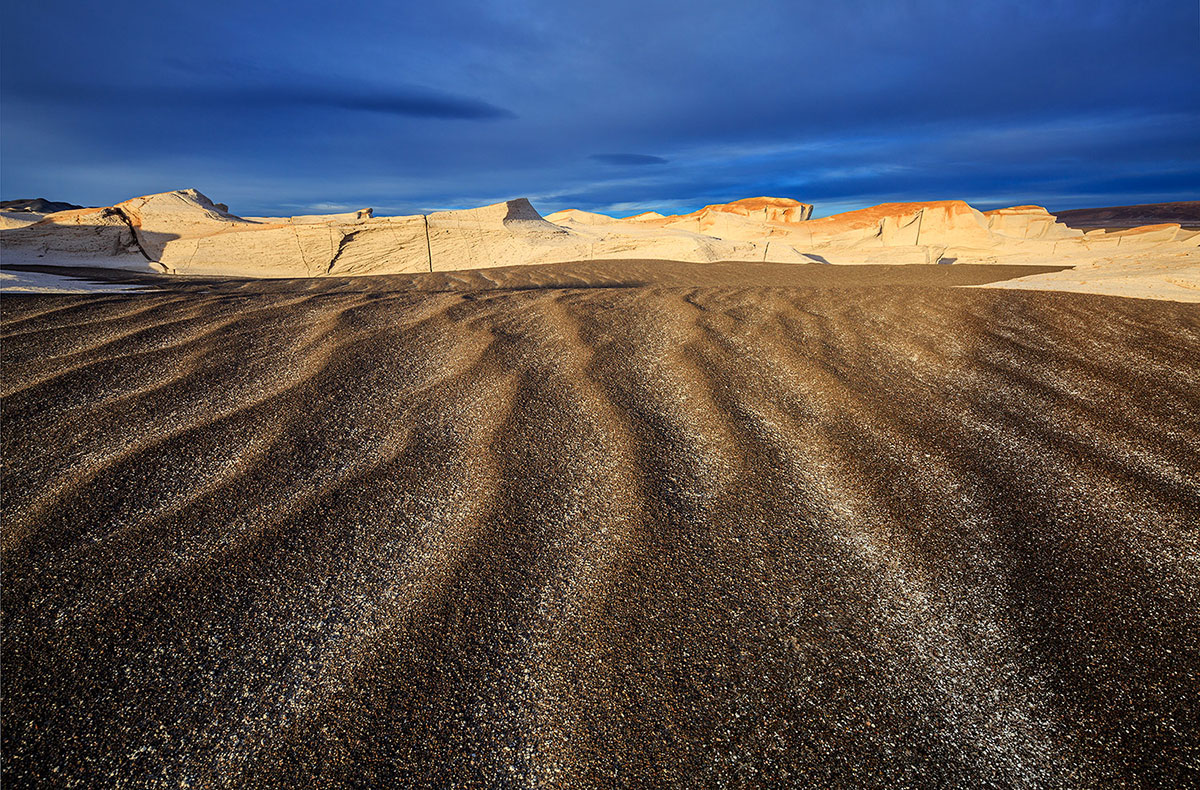
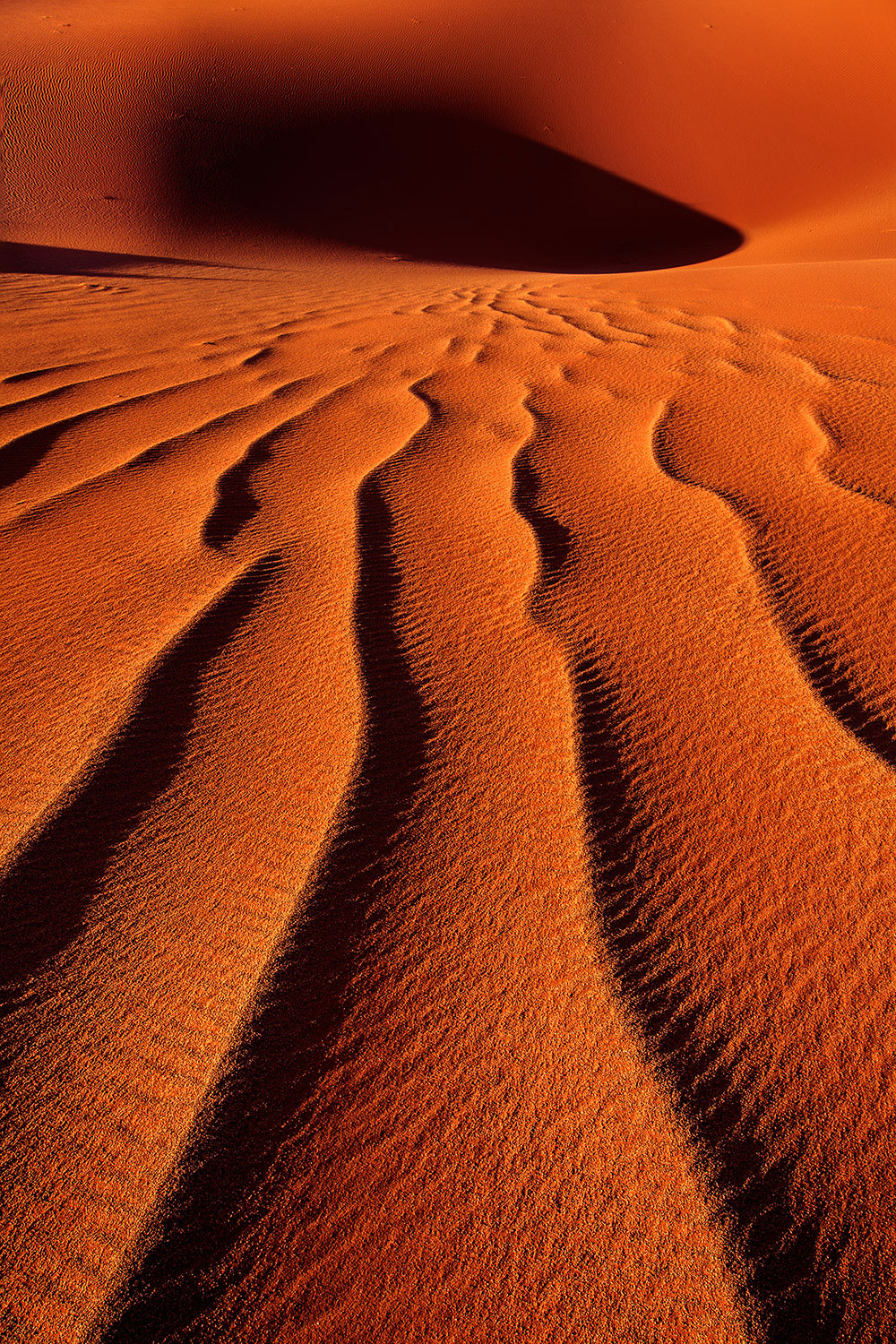
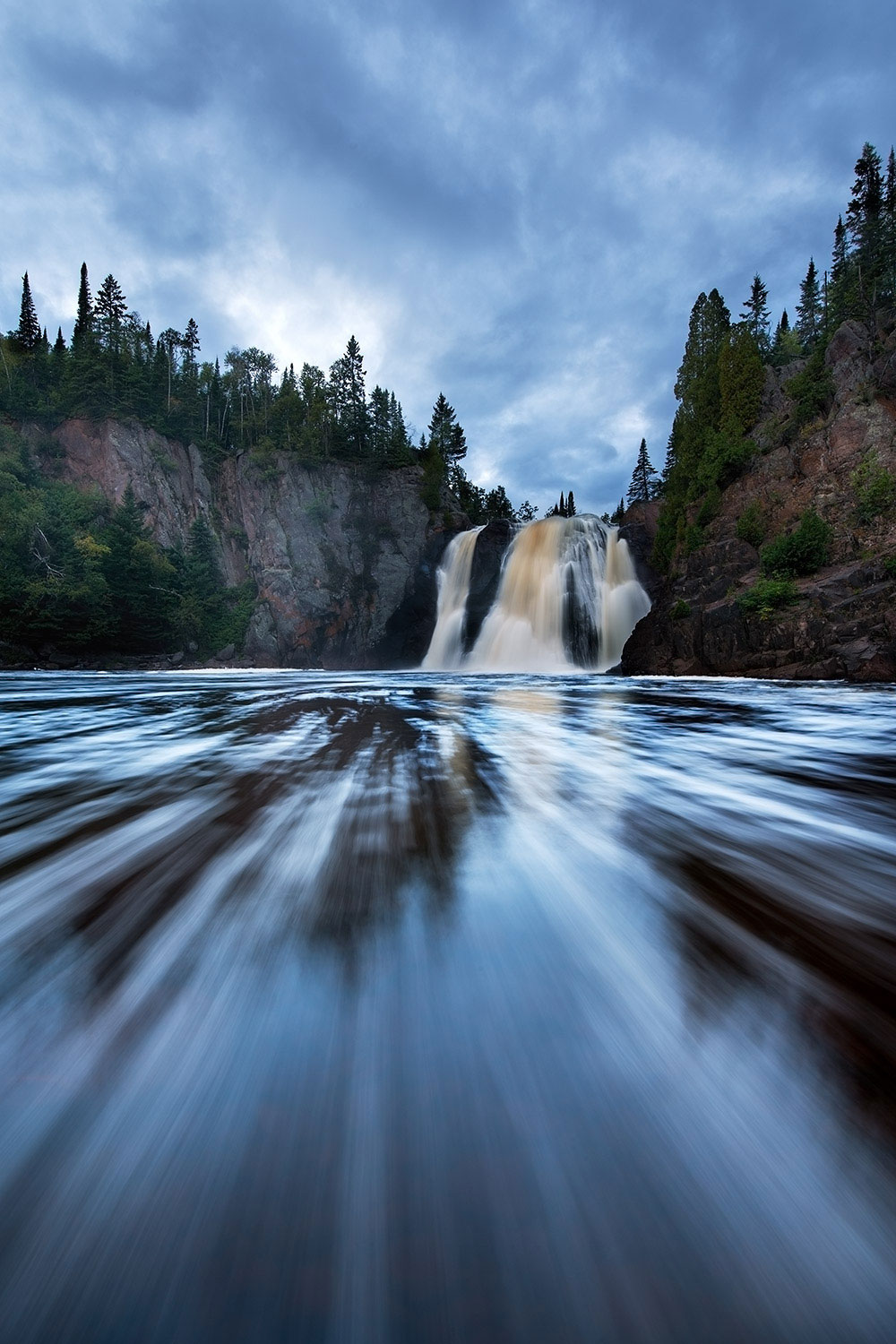

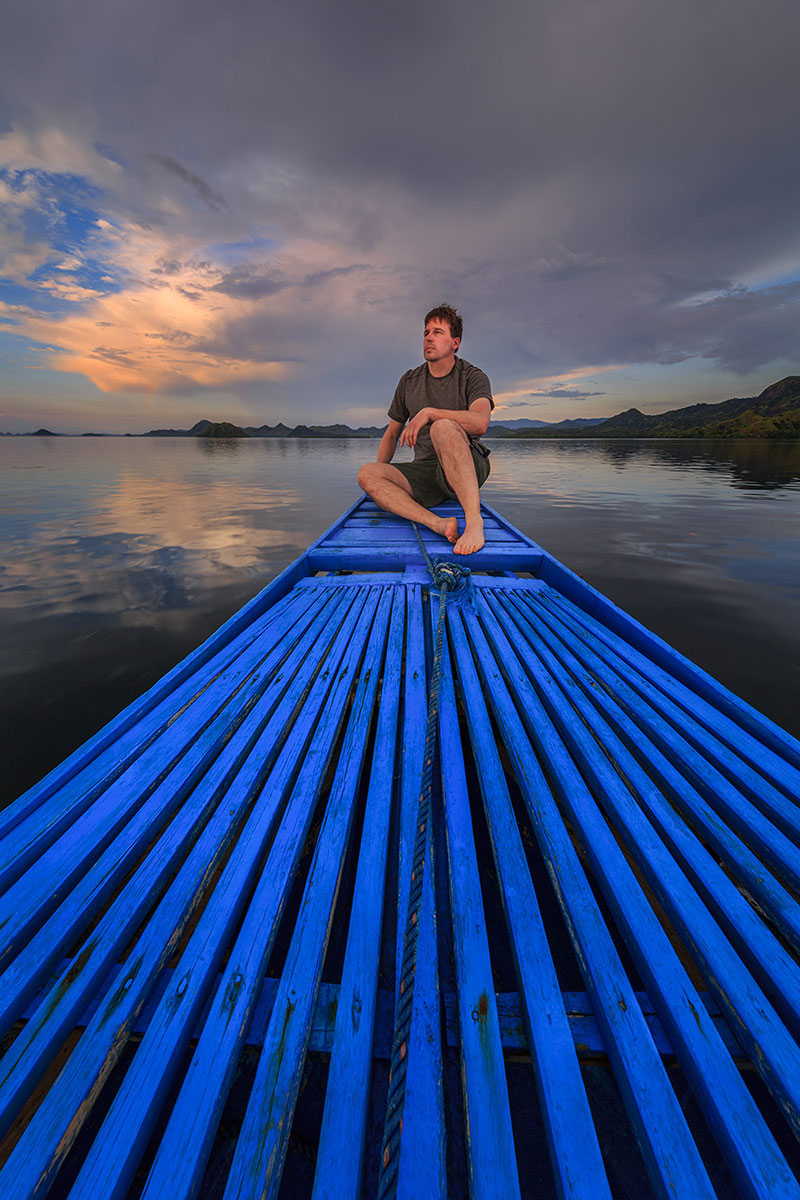


Wonderful ideas for better photos, thank you for sharing with us. It is amazing what lines can do in a picture.
The first photo of the sky reflected in the water in the canyon is Extraordinary! Thanks for the ideas.
Great text....showing what can done with a little planning.
Great content. Thank you. It help me to understand and know why I am drawn into a scene when I see "it"...it's the lineal directions. And now I understand the why and how to frame it.
Thank you very much what I look for in acquiring more skills
Just saw your video about taking pictures in slot canyons. Adding this article to that video makes for one powerful photography lesson. I know: "Go out and do likewise". Thank you so much!
Great post Ian, thanks.
You so inspire us to do "better", to see nature's beauty with new eyes..Thanks Ian for the photography knowledge you share, it's appreciated.
Thanks for the post, Ian. You have some great examples of the topic. The waterfall at Tettegouche State Park really stands out. As you said, it's really powerful in how it leads you in to the falls. It feels like we're in the water being swept away. I'm going to make a point of looking for leading lines and try integrating them a little more into my own images. Thanks.